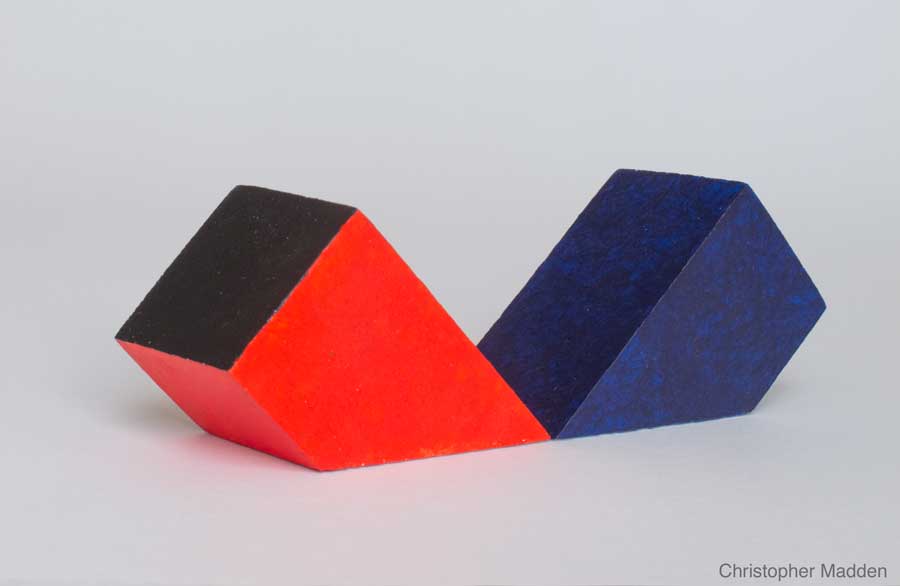
Right Angle – abstract geometric sculpture
Wood, red and blue acrylic paint. August 2017
It’s hard to tell how big this sculpture is from this photograph.
It could be a couple of metres tall. In fact it’s closer to five centimetres, as the piece is created from lengths of 2×2 wood (two inches by two inches). The work has a strange relationship with scale. It’s small, but it could be big.
At it’s actual size this sculpture looks as though it’s happy at the size that it is, while somehow containing the spirit of a larger sculpture within itself. In some ways it gives the impression of being a large object that is somehow being perceived as being small, as though viewed through the wrong end of a telescope.
As I mentioned, this work is composed of two pieces of two by two wood. This is a common size of wood sold in long lengths in timber yards for use in general construction projects. This sculpture came about when I picked up two short offcuts of wood from a different project, that each had been cut at 45 degrees at one end, and placed them on a work surface on their angled faces. They instantly acquired a dynamic and vital presence. Due to the manner in which they rested at an angle each piece looked as though it was embedded in the surface with part of its form submerged.
One of the things I like about this work is that it is made from extremely simple components – two pieces of wood from a builders’ merchants and a bit of red and blue acrylic paint. Yet it doesn’t look like a work created in the spirit of found objects or ‘detritus art’ in which the work is often deliberately engineered to emphasise its origins in the flotsam and jetsam of contemporary consumer culture (Artists such as Philidda Barlow, whose work I like greatly, and Abraham Cruzvillegas come to mind as good exponents of this genre). The bright red and blue primary colours of the sculpture help, as found object sculpture is often the colour of rubbish. In fact this sculpture could almost be mistaken for a tiny example of the highly engineered works that are quite common in modernist sculpture.